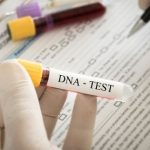Bill A-2594, that passed the New Jersey Assembly Law and Public Safety Committee and now heads to the full Assembly, will increase law enforcement’s crime-fighting powers buy requiring DNA samples from individuals arrested on suspicion of certain violent crimes. An identical version of the bill has already been approved by the Senate today.
Bill A-2594 amends New Jersey’s “DNA Database and Databank Act of 1994” so that it requires DNA samples from anyone arrested on suspicion of crimes. These include: murder; manslaughter; second degree aggravated assault; attempts to or causes serious bodily injury to another, or causes bodily injury while fleeing or attempting to flee a law enforcement officer; kidnapping; luring or enticing a child; engaging in sexual conduct which would impair or debauch the morals of a child; or aggravated sexual assault; sexual assault; aggravated criminal sexual contact; criminal sexual contact, or an attempt to commit any of these offenses.
The New Jersey bill stipulates that if the charges against a person from whom a DNA sample was collected are dismissed, or if a person is acquitted at trial, the sample and the profile would be destroyed, and all related records expunged, upon request by that individual.
The bill also gives law enforcement the teeth to be able to ensure compliance by making it a crime for any person who knowingly refuses to submit to the collection of a blood or biological sample. The penalty would be a term of imprisonment of up to 18 months, or a fine of up to $10,000, or both.
This bill will start to work with the FBI’s current index of DNA profiles. The FBI uses a system called CODIS (Combined DNA Index System) which provides for the storage and exchange of law enforcement DNA records on a national basis. CODIS consists of two separate indexes. The first is a “forensic” index containing DNA profiles from crime scene evidence. The second is an “offender” index, with DNA profiles of convicted offenders. It also allows for an electronic comparison of the DNA profiles from those two indexes. Often “hits” (matches) between DNA found at crime scenes and DNA profiles of convicted offenders are made. Analysts can also link multiple or unsolved crimes to a single perpetrator by comparing profiles in both indexes.




